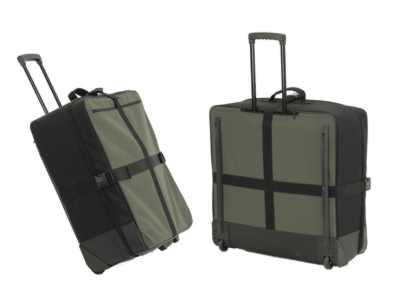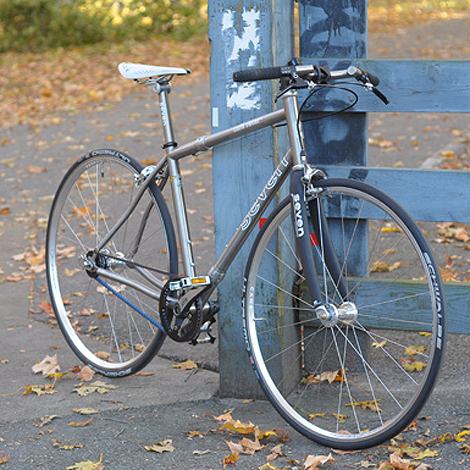The soul of adventure is the unknown, those parts of a trip that can’t clearly be seen or arranged beforehand. Zand Martin and his expedition partner Brian engaged that unknown on so many levels as they approached the Altai Mountains, looking for the spiritual home of skiing in central Asia.
Here is another installment of Zand’s trip journal, with accompanying photographs. As ever, we are grateful to him and all those who seek adventure on a Seven.
“Da, yes. Kurgan.” The shepherd pointed behind him without looking. He hunched low over his horse, hands pressed between stomach and saddle horn. He wore a knit ski mask, black leather overcoat, and dark corduroys with patches of thick quilting showing at the knees. He presented an intimidating figure high above, and the gallop that brought carried him across my path reinforced this menacing countenance. Brian had rounded the corner without noticing the stones, and I was alone.Up the valley, where the shepherd pointed, a series of stone rings and cobble piles punctuated an angled plain. In the narrow space between mountain and river, these tombs showed on the surface in gray, weathered rock painted in crimson lichen. They hadn’t been excavated, and still held the remains of some long-dead chariot rider, goat herder, prince, or peasant. The Bronze Age denizens of central Eurasia – Scythian, Turkic, Indo-European – had ridden here, and buried their dead. Above the tombs – kurgans in Turkic – two standing stones marked another site. When I reached the first dark obelisk, I had heard the hooves and spotted the horse and rider hurtling across the plain.
“Turkic? Mongol?” I asked, pointing, trying to fill the silence.
“Kazakh.” Perhaps he misunderstood. The Kazakhs didn’t live here five thousand years ago. They didn’t really exist as a tribe or ethnicity until five or six hundred years ago, but this was a homeland now, and the tombs were, in a convoluted sense, those of their ancestors. While the Russians colonized the Kazakh steppe, many groups escaped over the border of the expanding Empire and settled here in western Mongolia. In Kazakhstan, some say that to find real Kazakh culture you need to look in the remote west of Mongolia.
Under the shepherd’s gaze, I calm and walk amongst the stones. I compliment his flocks, their health and number, and think I see him smile beneath the mask. Beneath hat and hood, zinc and sunglasses, I hide from the sun, while he wears a mask. I am in no danger. I walk respectfully, shake hands, and cycle away as he watches.
We were finally on a downhill run after crossing our last pass, the 3000m Rashin Davaa, and no major obstacles remained between us and China. The main road from Bayan-Olgii aimag runs southeast to Khovd, and then traces a huge loop southwest through a low point where Altai begins to taper into the Gobi. We see a shortcut on the map, a thin, dotted line that runs due south and reaches Bulgan soum and the Chinese border in half the distance. Already crunched for time due to the glacial pace of the Russian embassy, we roll the dice and trade the known for a chance at speed and wildness.
Instead of 800km on the main road, we cross the mountains over rough tracks and pitted roads. These jeep tracks show no sign of intentionality, but instead wander in a braid of ten or twenty lanes where one jeep followed another, and then bundle together over passes and rivers in washboard, sand, and boulder. With almost no information and the barest of navigation aids, we are certainly taking a risk. Not so much of physical harm, but of discomfort, despair, and time wasted. A friend in Olgii assures us there are towns, traders driving the route, and a public bus that goes everyday. In the event, we are passed by a handful of vehicles in five days, and only two dusty outposts with bare shelves mark the route. We eat ramen and carry water from one valley to the next, constantly fretting as bottles run down and we go without.
Over Rashin, we roll along the Buyant and Bulgan gol, descending from alpine to steppe to desert. We are dry. I wake each day with cracked lips and swollen eyes, dust in every pore and ephemeral daydreams of trees, green grass, and water. Scraggly poplars appear as we drop, and mud brick houses and gers show up along the river. We pass a string of Bactrian camels laden with baggage, household goods, and the stove, poles, felt and canvas of a packed ger. Women on horseback plod along with them as horsemen maneuver the flocks around the train. Bits of color trail the lumbering beasts of burden: bright felted rugs in swirling dual tone motifs, and bits of scarf or jacket were a young child has been bundled.
We rejoin the pavement as a sandstorm rages. The valley dissipates, the walls exploding apart, and the river is lost to sight. The mountains diminish. We turn into sharp hills of gravel and sand, and grind down towards China.



